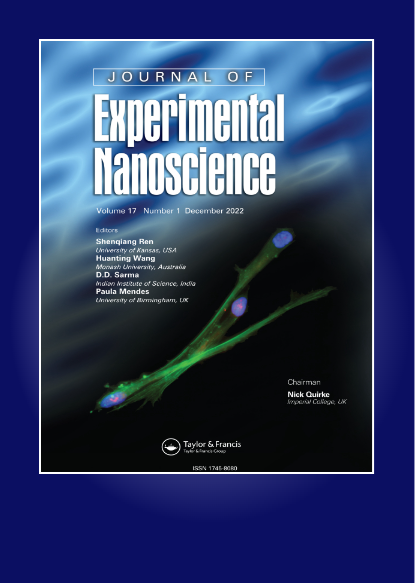神经保护丝-丝胶水凝胶的制备:缺血性脑卒中治疗和护理的潜在神经载体
IF 2.6
4区 材料科学
Q2 CHEMISTRY, MULTIDISCIPLINARY
引用次数: 5
摘要
缺血性中风由于广泛的细胞损失和脑功能损伤导致严重的残疾。目前再生脑组织的方法是无效的。中风治疗需要既安全又有效的创新治疗技术。对于神经元修复,一种很有前途的替代方法是使用基于水凝胶的组织工程技术,将神经营养细胞因子和细胞输送到损伤部位。然而,有限的包封效果,较低的体内细胞存活率和细胞因子损失使该策略难以实施。我们的目标是设计一种生物材料,可以有效地构建丰富细胞存活的基质,并最大限度地减少体内细胞因子的损失,以克服这些限制。我们报道了利用天然蚕丝蛋白丝胶蛋白开发的genipin共轭丝胶水凝胶(Gen-SH),具有高多孔形态和中等膨胀率。在体外,Gen-SH有助于神经元的附着和发育。我们的研究结果表明丝胶蛋白在原代神经元中具有固有的神经保护和神经营养作用,可以分支和促进轴突延伸,避免缺氧诱导的细胞死亡。值得注意的是,Gen-SH的分解产物继承了这些能力,节省了细胞因子的成本。此外,我们发现Lkb1-Nuak1通路是这种神经营养影响所必需的,而Bcl-2/Bax蛋白比例是神经保护作用所必需的。在体内移植,Gen-SH具有较高的细胞存活率和促进细胞增殖。考虑到所有这些信息,很明显,Gen-SH可以作为治疗和护理缺血性中风愈合的可行载体,无论是在传递神经元细胞和保护它们免受氧化损伤方面。本文章由计算机程序翻译,如有差异,请以英文原文为准。
Fabrication of neuroprotective silk-sericin hydrogel: potential neuronal carrier for the treatment and care of ischemic stroke
Abstract Ischemic stroke results in severe disabilities due to extensive cellular loss and the resulting impairment of brain functions. Current methods for regenerating brain tissue are ineffective. Stroke treatment requires innovative therapeutic techniques that are both safe and effective. For neuronal repair, a promising alternative is using a hydrogel-based tissue engineering technique that delivers neurotrophic cytokines and cells to injured sites. However, the limited encapsulation effectiveness, less in vivo cell survival ratio and cytokine loss make this strategy difficult to implement. We aim to design a biomaterial that can efficiently construct a matrix enriching the survival of cells and minimizing loss in vivo cytokines to overcome these constraints. We report the development of genipin conjugated sericin hydrogels (Gen-SH) with a high porous morphology and a moderate swelling rate utilizing sericin, a natural silk protein. In vitro, Gen-SH aids in the attachment and development of neurons. Our results indicate that sericin is inherently neuroprotective and neurotrophic, branching and publicizing axon extension and avoiding hypoxia-induced cell death in primary neurons. Notably, the breakdown products of Gen-SH inherit these capabilities, saving the expense of cytokines. Furthermore, we show that the Lkb1–Nuak1 pathway is required for this neurotrophic impact, whereas the Bcl-2/Bax protein ratio is necessary for the neuroprotective effect. Transplanted in vivo, Gen-SH has a high percentage of cell survival and promotes cell proliferation. Taking all this information into account, it's clear that Gen-SH can serve as a viable carrier for treatment and care for ischemic stroke healing, both in terms of delivering neuronal cells and protecting them from oxidative damage.
求助全文
通过发布文献求助,成功后即可免费获取论文全文。
去求助
来源期刊

Journal of Experimental Nanoscience
工程技术-材料科学:综合
CiteScore
4.10
自引率
25.00%
发文量
39
审稿时长
6.5 months
期刊介绍:
Journal of Experimental Nanoscience, an international and multidisciplinary journal, provides a showcase for advances in the experimental sciences underlying nanotechnology and nanomaterials.
The journal exists to bring together the most significant papers making original contributions to nanoscience in a range of fields including biology and biochemistry, physics, chemistry, chemical, electrical and mechanical engineering, materials, pharmaceuticals and medicine. The aim is to provide a forum in which cross fertilization between application areas, methodologies, disciplines, as well as academic and industrial researchers can take place and new developments can be encouraged.
 求助内容:
求助内容: 应助结果提醒方式:
应助结果提醒方式:


